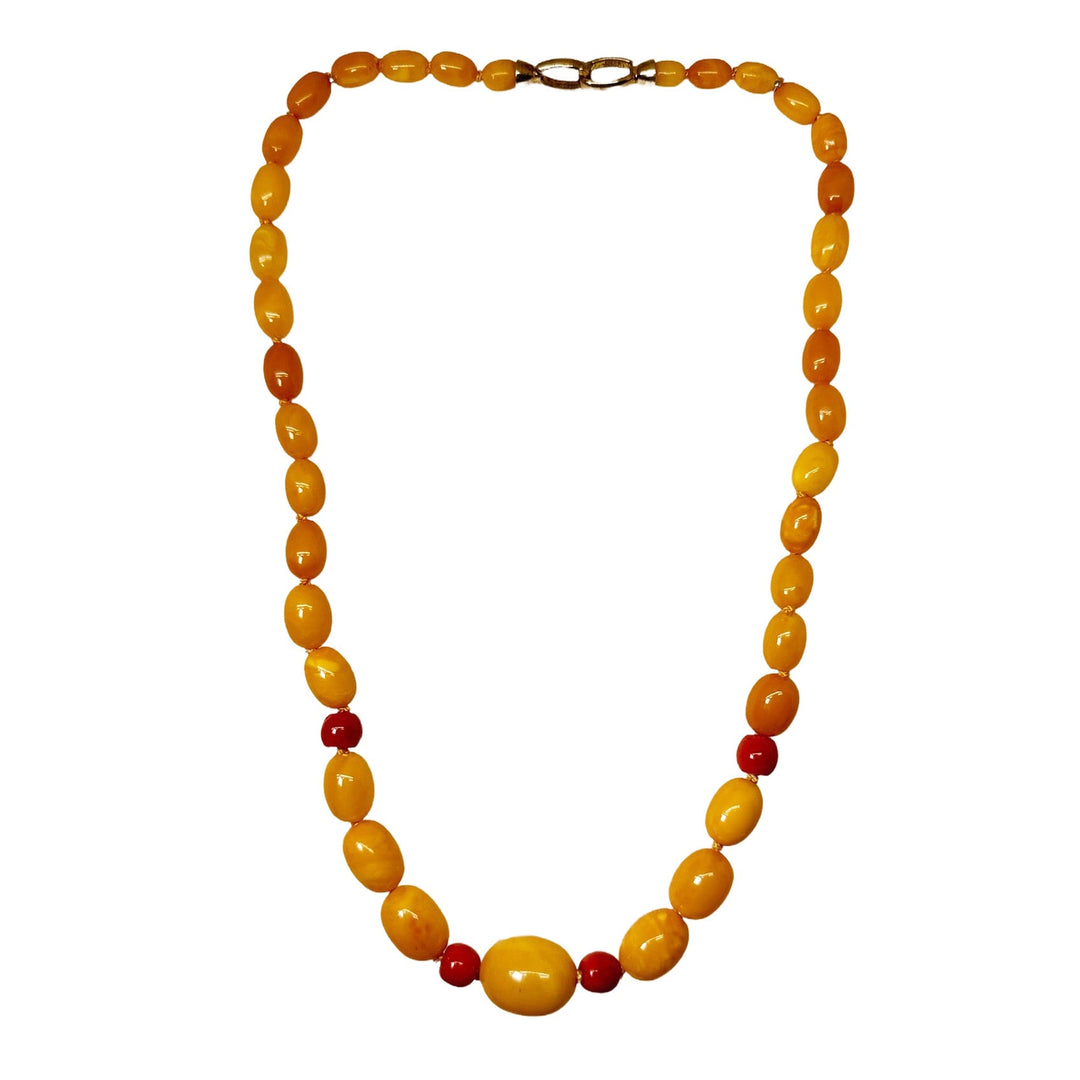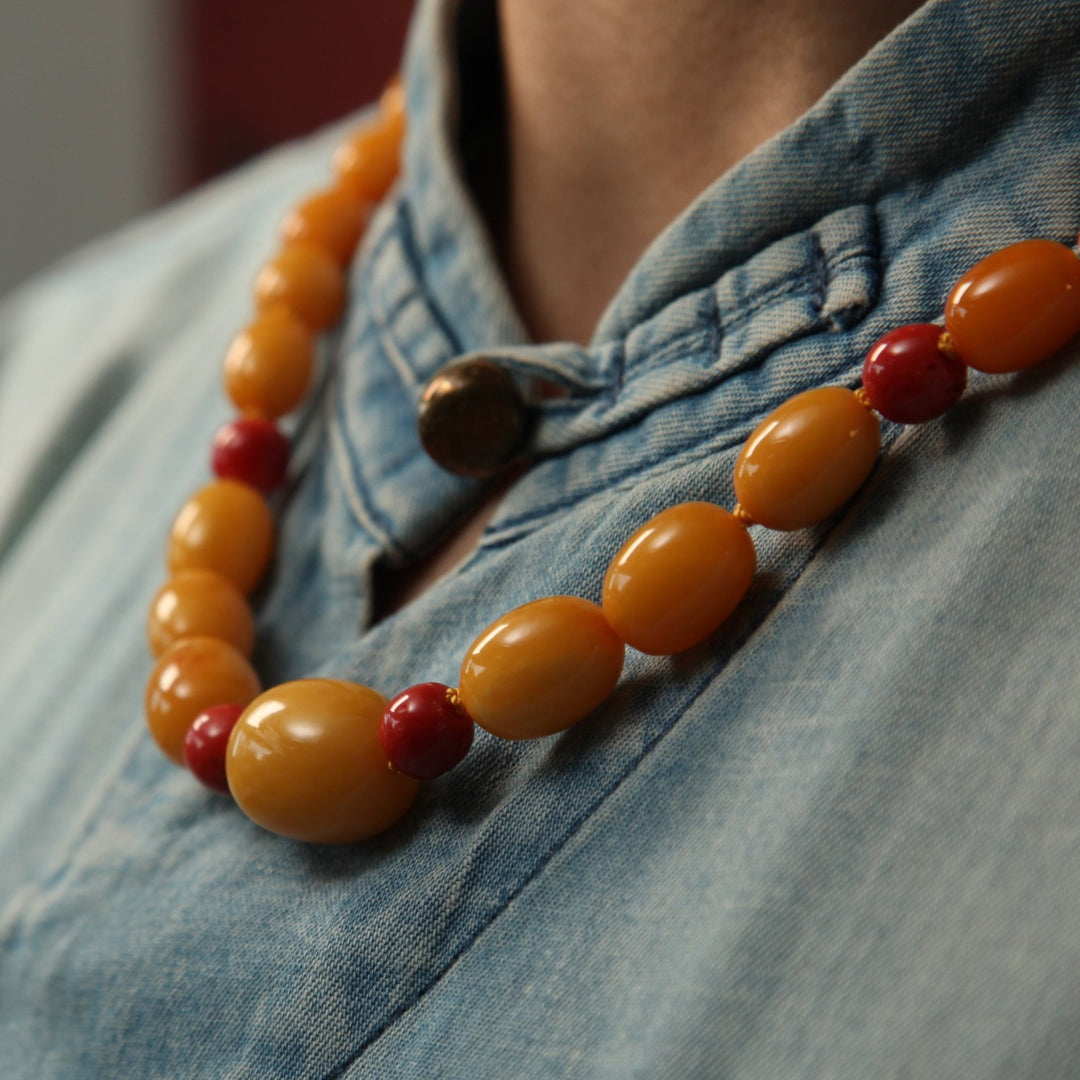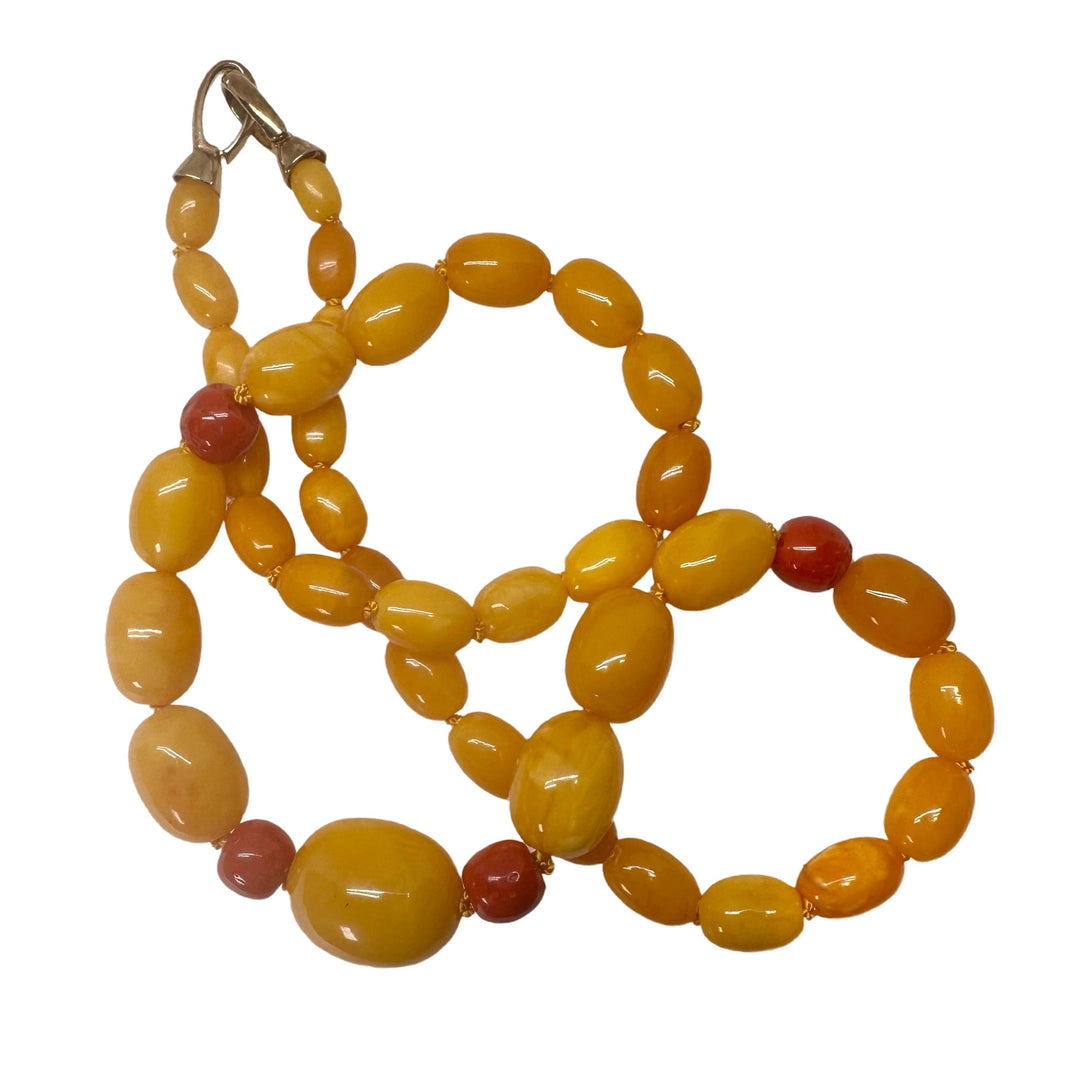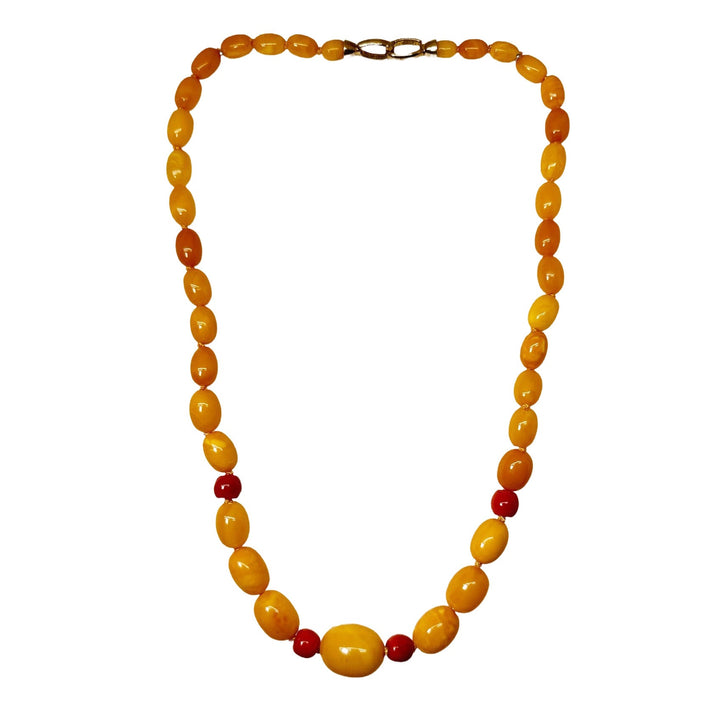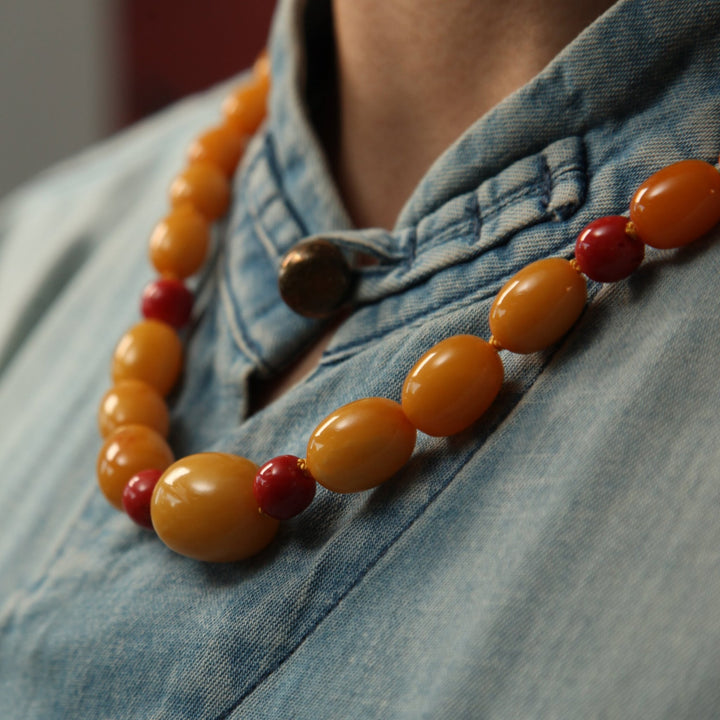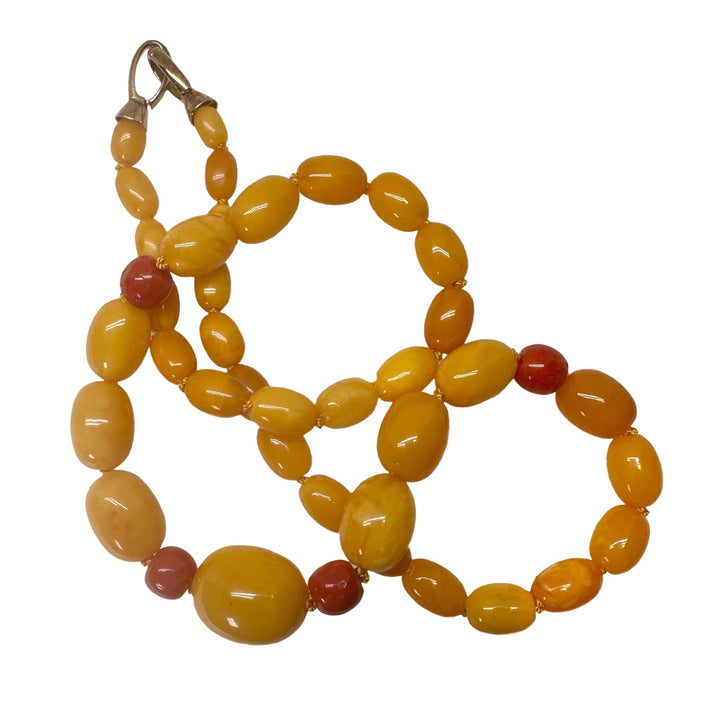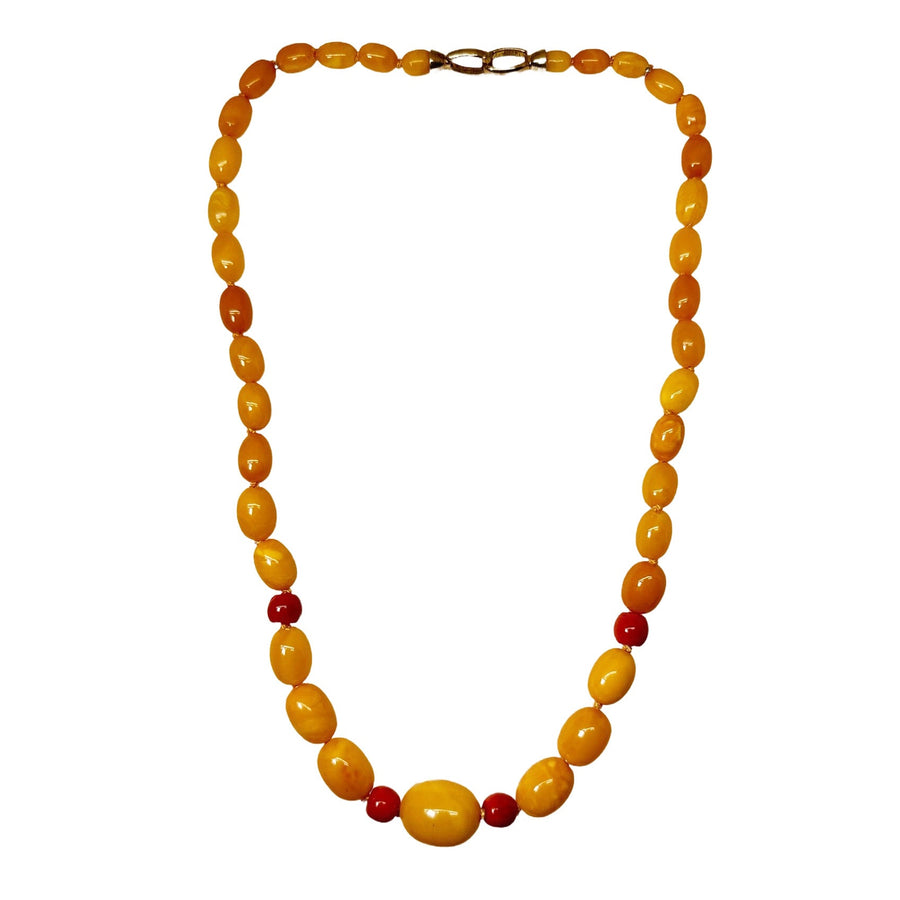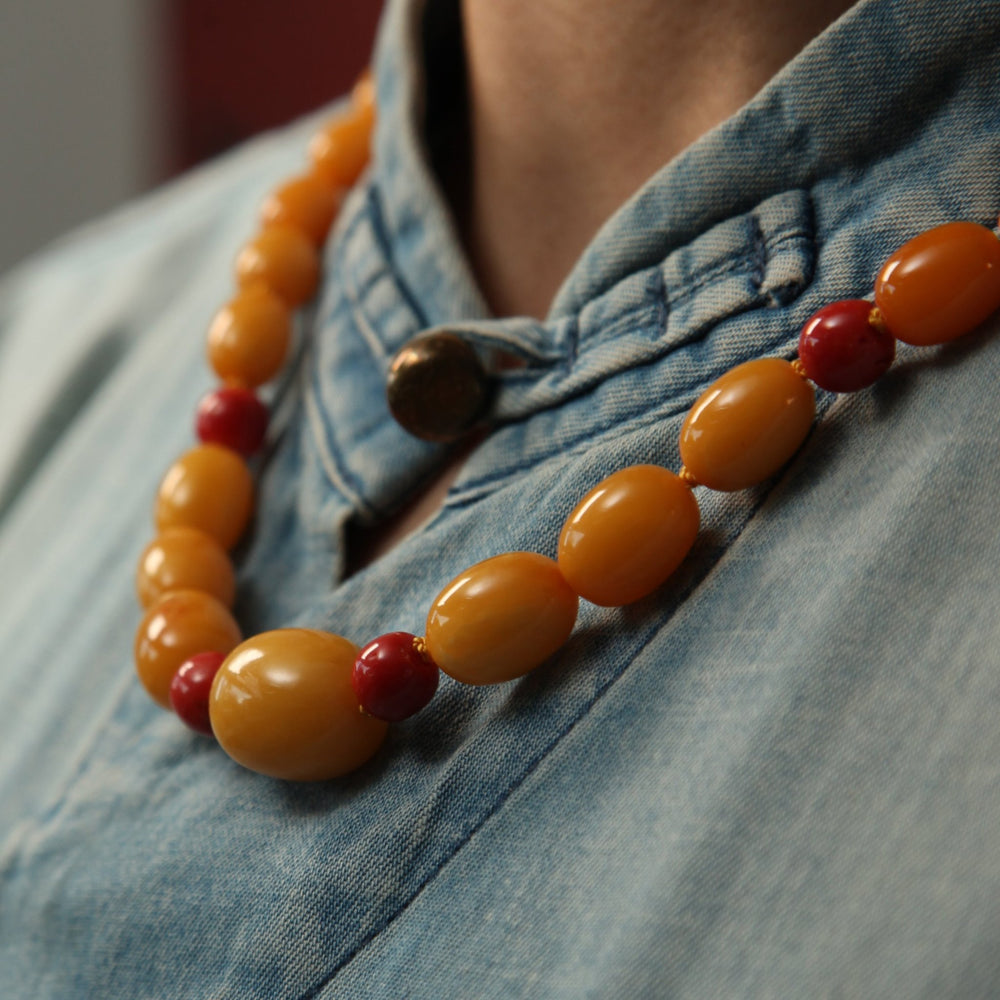Old butterscotch amber necklace with coral beads
This elegant necklace from the 20th century consists of honey-colored, olive-shaped butterscotch amber beads and four old, deep red coral beads. The necklace is fastened with a metal hook clasp and has a circumference of 50 cm.
Butterscotch amber is a special variety of amber with an opaque, creamy yellow to honey-colored hue that is reminiscent of butterscotch (caramel candy). In contrast to transparent amber, its milky appearance is caused by tiny trapped air bubbles. It is rarer than classic clear amber, especially in uniform shades. In Tibetan culture, butterscotch amber is traditionally used in amulets and jewelry.
Coral has a deep spiritual and cultural significance in traditional Tibetan jewelry. The red precious coral (Corallium rubrum) is particularly prized. In combination with turquoise and silver, coral beads are a characteristic element of Tibetan prayer beads(malas), amulets and ritual jewelry. As Tibet is a landlocked highland, coral was imported from the Mediterranean and the Southeast Asian region via centuries-old trade routes. Nowadays, precious coral is strictly protected, which is why modern Tibetan jewelry is made with old, recycled coral or sustainable alternatives.
Bracelets, bracelets, bracelets, bracelets, chains
| age | Wrist circumference |
|
Newborn |
9 - 12 cm |
|
6 months - 3 years |
12 - 14 cm |
|
4 - 10 years |
14 - 15 cm |
|
Teenager, ladies (XS) |
15 - 16 cm |
|
Ladies (M) |
16 - 17 cm |
|
Ladies (XL) |
18 - 19 cm |
|
Men (M) |
18 - 20 cm |
|
Men (XL) |
21 - 22 cm |
The length of the bracelet may be 1 cm to 3 cm longer than the measured wrist circumference, depending on your taste.
Finger rings
| Ring size | Inner diameter | Inner circumference |
|
48 |
15,3 mm |
48 mm |
|
50 |
15.9 mm |
50 mm |
|
52 |
16.6 mm |
52 mm |
|
54 |
17.2 mm |
54 mm |
|
56 |
17.8 mm |
56 mm |
|
58 |
18.5 mm |
58 mm |
|
60 |
19.1 mm |
60 mm |
|
62 |
19.7 mm |
62 mm |
|
64 |
20.4 mm |
64 mm |
|
66 |
21.0 mm |
66 mm |
- Take a ring that fits well.
- Place it on a ruler and measure the inner diameter (from one inner edge to the other).
- Compare the diameter with the table to determine the ring size.
- Take a thin strip of paper or thread.
- Wrap it around the part of the finger where you want the ring to sit (not too tight).
- Mark the point where the ends meet.
- Measure the length of the strip in millimeters. This is the inner circumference.
- Find the right size in the table.
- Measure the finger size in the evening, as fingers swell slightly during the day.
- If you are between two sizes, choose the larger size.
- Make sure that the ring fits over the knuckle.


